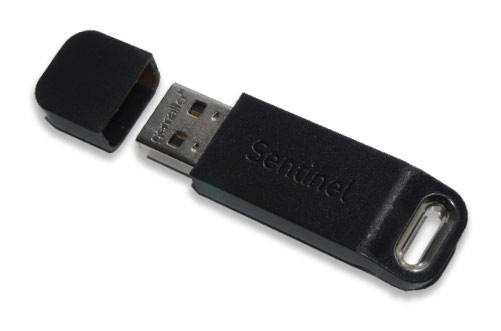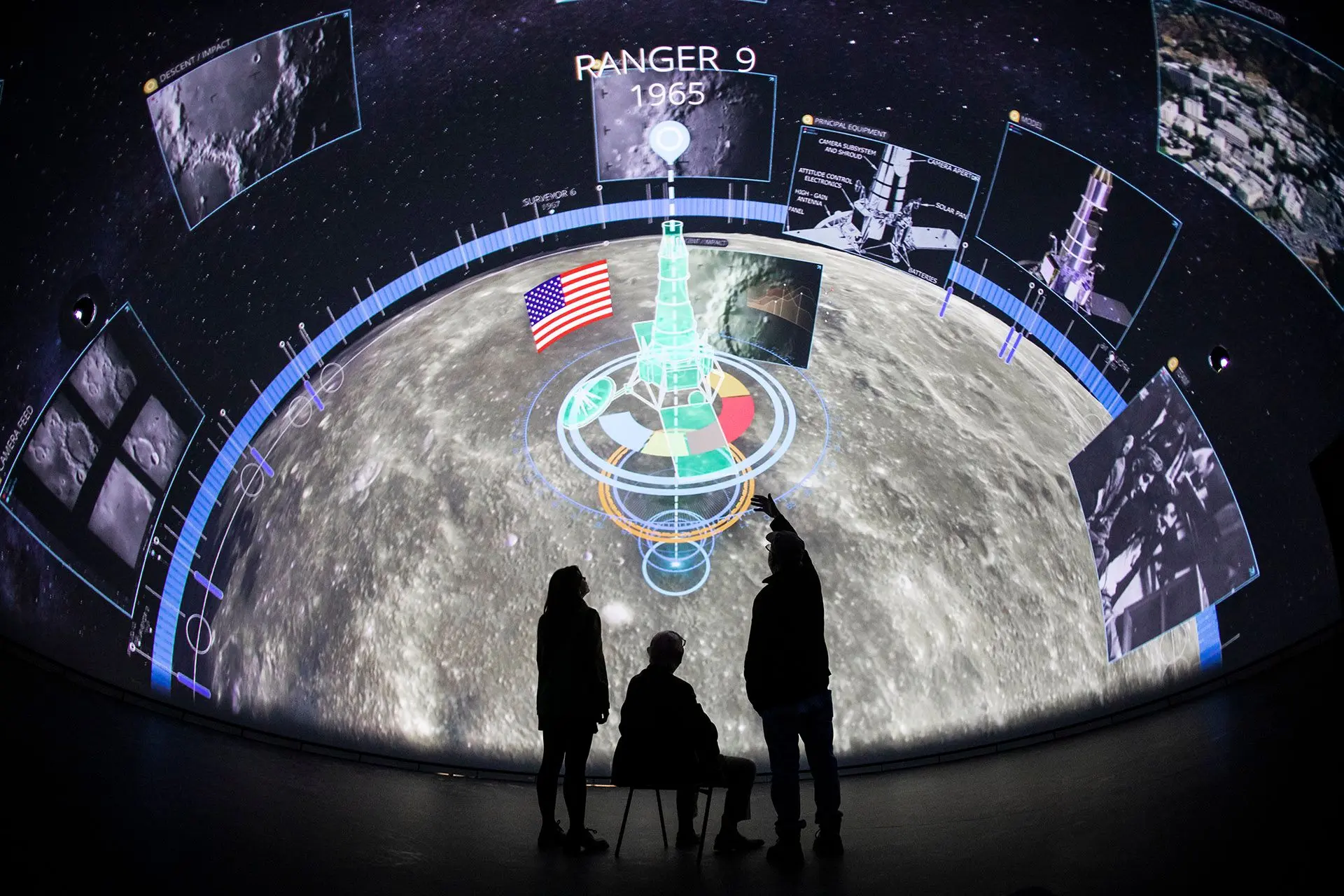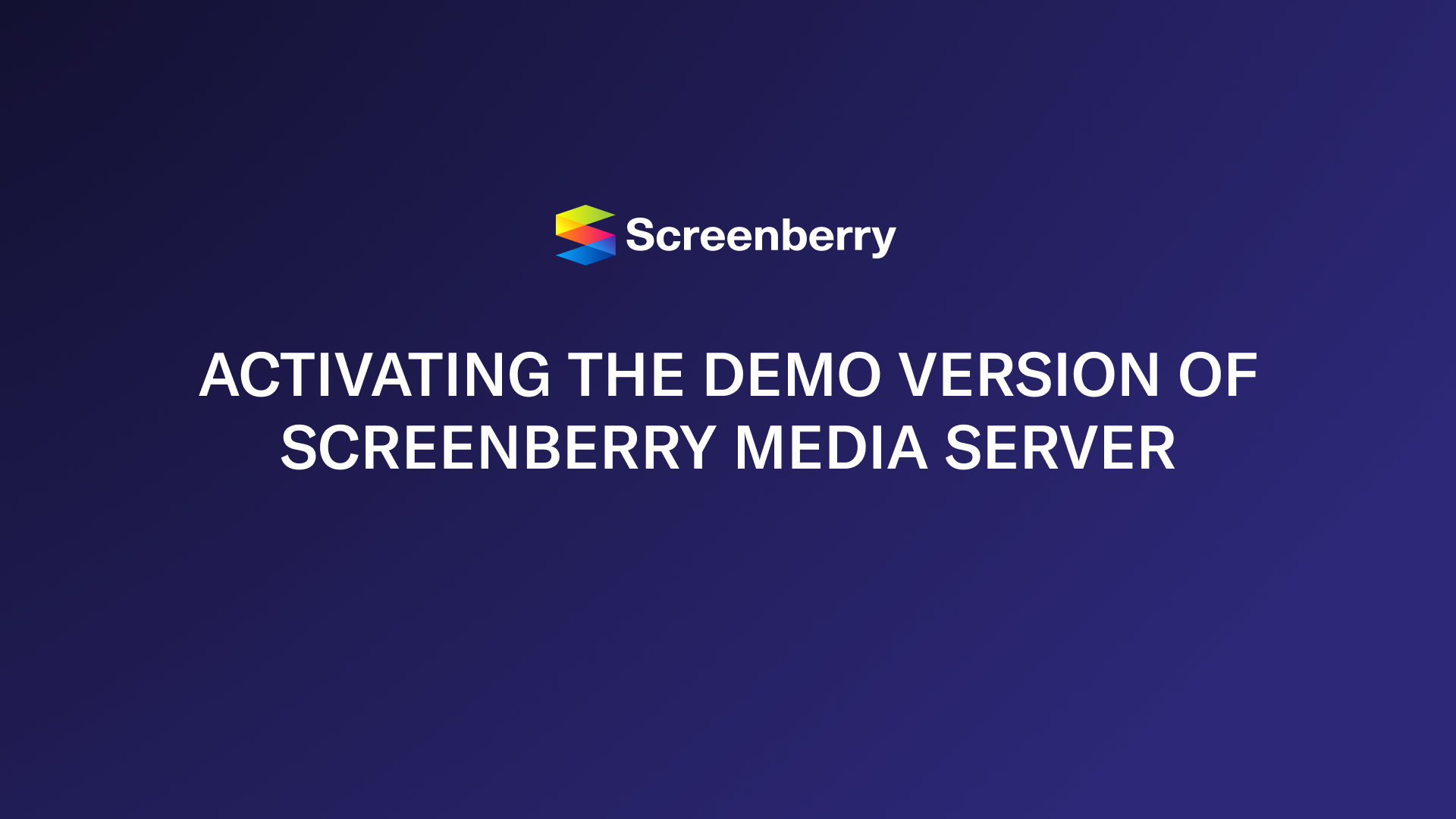Hardware Requirements
| Minimum | Optimal | |
|---|---|---|
| Operating system | Windows® 10 with the latest service pack, 64-bit | Windows® 10 with the latest service pack, 64-bit |
| Processor | Intel® Core™ / AMD™ dual-core processor | Intel® Core™ / AMD™ quad-core processor |
| Video | NVIDIA® GeForce® / AMD™ Radeon™ 2 GB VRAM with support of OpenGL 3.3 | NVIDIA® GeForce® / AMD™ Radeon™ 6 GB VRAM |
| Memory | 8 GB RAM | 16 GB RAM |
| Input | Keyboard and mouse | Keyboard and multi-button mouse with scroll wheel. |
Note: The optimal hardware specifications should be determined by the requirements of the current system setup, which includes the number of output and input devices, the output resolution, etc. The higher the requirements, the greater the demand on the hardware for sustaining optimal performance.
License Dongle
A license dongle is required to run the Screenberry Server and has to be plugged into any available USB port of the Media Server computer.

Important: Screenberry Server can be used without a license dongle. However, it will operate in Demo mode. In Demo mode, a related message will appear in the server output window occasionally.
Network
The Operator Workstation computer should be connected to the Media Server computer via Ethernet. A Wi-Fi network connection is possible but not recommended.
Graphics Card
To allow Media Server video output, a graphics card is required to support OpenGL 3.3.
Graphics Card Settings
For a multi-display setup, some graphics cards allow the video output to be broadcast to an array of several displays. This feature is not supported by all graphics cards and has different names depending on the manufacturer. Please refer to your manufacturer’s documentation or website for more details.
| Manufacturer | Product | Feature name |
|---|---|---|
| Nvidia | GeForce | |
| Quadro | Surround | |
| Mosaic | ||
| AMD | Radeon | Eyefinity |
Use the following graphics card settings for optimal performance:
- Set Power Management to Maximum Performance.
- Set Output Dynamic Range to Full.
Output Devices
Screenberry supports output to projectors, LCD, LED, PDP displays or any other output device supported by a graphics card. Video output devices can be connected to the graphics cards directly or via video wall controllers (graphics expansion devices). The number of output devices depends on the hardware capability and configuration.
Audio Output
The Media Server supports multi-channel audio configurations with up to 64 channels via MADI and Dante® interfaces with the choice of Mono, Stereo, 5.1, or 7.1 outputs using ASIO, WASAPI, and WINMM protocols.
Input Devices
Screenberry works with video input devices and supports Datapath Vision, Blackmagic DeckLink, Deltacast, Magewell, and other capture cards.
Hardware Drivers
Graphics and capture cards require software drivers provided by the relevant manufacturer.
Media Server Optimization
Disabling Automatic Updates
Windows automatically downloads and installs updates in the background. Though keeping your system up to date is recommended, automatic updates may interfere with Screenberry’s performance, resulting in an increased load on your system that could lead to playback problems. Automatic updates can easily be disabled in Windows Settings. For Windows 10:
- Go to Control Panel > Update & Security > Services.
- Search for Windows Update.
- Right-click the name of the service and click Properties.
- In the Startup type drop-down list, select Disabled.
Note: Once automatic updates have been disabled, Windows will no longer download and install updates. For security reasons, it is recommended that you periodically re-enable updates and install any available system updates manually.
Disabling Automatic Notifications
Automatic notifications in Windows can come as an unwelcome surprise, especially during live shows. To turn off notifications in Windows 10:
- Click Start menu > Settings > System.
- Select Notifications & actions.
- Turn off notifications.



